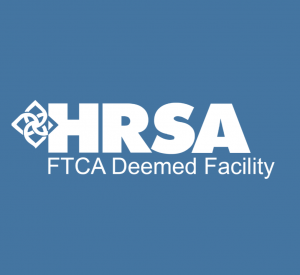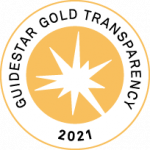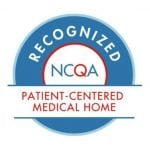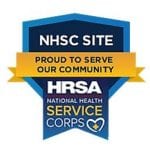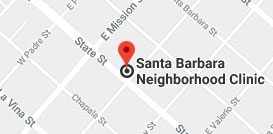Opioid Use Disorder Can Happen to Anyone.
Recovery may not be as hard as you think.
Find out more about Medication-Assisted Treatment.
— UNDERSTANDING OPIOIDS —
What are Opioids?
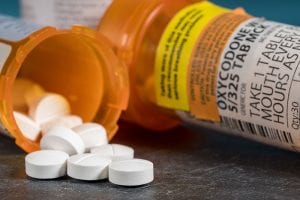 Opioids are a family of drugs such as heroin and morphine that are made from opium poppies. They can also be man-made, such as Oxycodone (Percocet, OxyContin), Hydromorphone (Dilaudid) and Hydrocodone (Vicodin, Norco). The class also includes compounds not related to opium like Methadone and Fentanyl. These substances act on the brain in many ways and are highly addictive.
Opioids are a family of drugs such as heroin and morphine that are made from opium poppies. They can also be man-made, such as Oxycodone (Percocet, OxyContin), Hydromorphone (Dilaudid) and Hydrocodone (Vicodin, Norco). The class also includes compounds not related to opium like Methadone and Fentanyl. These substances act on the brain in many ways and are highly addictive.
Opioids are meant to be used for the treatment of acute (short-term) pain, but use over the long term can lead to addiction. They can have other unintended side effects such as decreased respiration, constipation, feelings of euphoria, increased risk of infection, nausea, depression, as well as decrease in sex drive and overall strength. Long-term use of opioids can actually increase the sensitivity to pain. Most importantly opioid use can result in death when breathing is stopped.
What is tolerance and addiction?
Opioids, like all addictive drugs, change how your brain is wired, meaning a person taking them will often need higher and higher doses to get the same effect. This is called tolerance. Without the drug, a person will go into withdrawal, which has been described as the worst flu one has ever had, to the point you feel like you are dying. People who are addicted to opioids can get to the place where they will do anything to stay out of withdrawal, including committing crimes and hurting and abandoning their loved ones. Many people believe those addicted to opioids should just tough it out and quit, whereas this is not so. Once addicted, the person will need professional help to maintain successful recovery.
 Substance Use Disorder is a disease that affects a person’s brain and behavior and leads to an inability to control the use of a legal or illegal drug or medication, this includes alcohol, tranquilizers, stimulants and opioids. Unfortunately, the brain changes and the development of tolerance and withdrawal are not under the person’s control. It is much more accurate to look at addiction to drugs, including alcohol, as a chronic (long-term) disease, just like diabetes or high blood pressure. The good news is that addiction is a treatable condition and a person can get professional help locally.
Substance Use Disorder is a disease that affects a person’s brain and behavior and leads to an inability to control the use of a legal or illegal drug or medication, this includes alcohol, tranquilizers, stimulants and opioids. Unfortunately, the brain changes and the development of tolerance and withdrawal are not under the person’s control. It is much more accurate to look at addiction to drugs, including alcohol, as a chronic (long-term) disease, just like diabetes or high blood pressure. The good news is that addiction is a treatable condition and a person can get professional help locally.
— ABOUT MEDICATION-ASSISTED TREATMENT —
How are the benefits of Medication-Assisted Treatment?
Medication-Assisted Treatment, or MAT, is an approach that combines medication with counseling support to address the behaviors and compulsive patterns that are associated with opioid addiction. Buprenorphine (such as Suboxone), is one medication commonly used for the treatment of opioid use disorder (OUD). Other drugs used to treat OUD include Naltrexone (Vivitrol) and Methadone. Your doctor will help you assess which medication is right for you.
Those with OUD who are on MAT are half as likely to die from an overdose as those not receiving medication. Just as heart disease is treated using medication and lifestyle changes, MAT for OUD, using the same approach, has proven to be the most effective way of helping a person get off of opioids and get back their life and health. Studies show that only 10% of patients are drug free one month after detox, while 50% to 80% of patients are no longer using opioids after six to twelve months of treatment with Buprenorphine.

How does Buprenorphine work?
Buprenorphine attaches to opioid receptor sites in the brain, reducing the dangerous effects of opioids. At the same time, it activates these sites, preventing cravings and withdrawal. A person who has been using opioids will not get high taking Buprenorphine. Buprenorphine allows the opioid receptors in the brain to rest, so people can begin to respond to the everyday pleasures they used to enjoy.
Isn’t using Buprenorphine just trading one addiction for another?
Even though Buprenorphine is an opioid, it’s very different from other drugs in this class. One important difference is it does not depress breathing to the same extent as other opioids, reducing the risk of overdose. It’s also important to remember there is a difference between drug dependence and drug addiction. A person can become physically dependent on Buprenorphine, however, addiction has psychological components. Addiction is defined as a loss of control and continuing to use even though it is creating negative consequences for a person. Since controlled use of Buprenorphine eliminates cravings and withdrawal, it allows a person to focus on having a life instead of getting and using drugs.
How long will I have to keep taking Buprenorphine?
Everyone is different. Some people have a negative view of having to stay on a medication long-term, yet we typically do not think poorly of people who must take insulin, or medication for high blood pressure. Although there are no set rules, it is known that the longer a person is in treatment, the higher the chances of success there are. A year is a typical amount of time to be on MAT before thinking about tapering off. Others stay on it indefinitely. Those who also experience chronic pain find that buprenorphine can help significantly with their pain control, in a much safer way.
Do You Suffer from an Opioid Use Disorder?
Do you struggle with opioid addiction?
Are you using more opioids than you want to?
Are you taking opioids “just in case,” even when you don’t feel pain?
Is it hard to cut down or control your opioid use?
Do you crave opioids?
Has your opioid use caused problems in your relationships with others, or in other parts of your life, like work, school, or home?
Are you developing a tolerance (feeling less effect from the drug)?
Have you tried to stop using opioids without success?
If you answered yes to any of these questions, you may have an addiction to opioids, and Medication-Assisted Treatment can help!
Addiction can be challenging but you don’t have to do it alone. There’s no shame in getting the help you need.
— LOCAL TREATMENT RESOURCES —
Outpatient Treatment Resources
Santa Barbara Neighborhood Clinics (SBNC)
With clinics located in Eastside, Westside, Goleta and Isla Vista, SBNC provides medical, dental and behavioral health services, including Medication-Assisted Treatment for Opioid Use Disorder. Services include:
- Bio-psycho-social assessments
- Drug and alcohol counseling for adolescents and adults
- Crisis interventions
- Facilitating care between patient, primary care, behavioral health and the broader community
For an appointment call: (844) 594-0343.
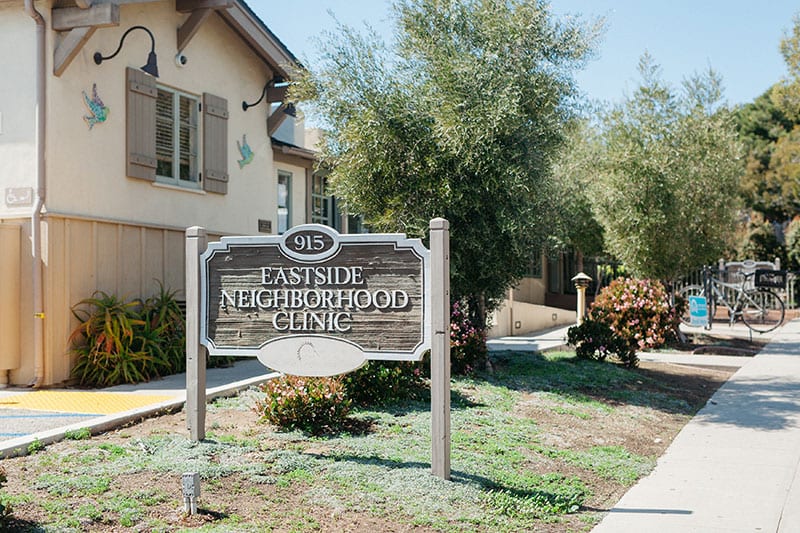
SBNC Bridge Clinic
The Bridge Clinic is a collaboration between partnership between Cottage Health and SBNC, designed to serve patients from Santa Barbara Cottage Hospital and community clinics who are diagnosed with substance use disorders. The Bridge Clinic provides treatment on demand for opioid and other substance use disorders with walk-in availability in a primary care setting directly across from Santa Barbara Cottage Hospital.
The Bridge Clinic responds to the full range of patient needs including:
- Substance Use Disorder Treatment
- Psychiatric and Psychotherapeutic Treatment
- Medical Treatment
- Pain Management
- Psychosocial Resources
Patient services include physician evaluation and treatment, including medically-assisted treatment; social work counseling and case management; flexible follow-up including daily visits and tele-health if needed; and connection to community resources, including residential and outpatient treatment programs.
A unique Behavioral Health Advocate can:
- Connect you with on-site substance use and mental health services
- Walk you through the process of making appointments
- Provide follow up services to assist you with long-term care management
- Attend medical and/or dental appointments with you
- Coordinate specialty appointments and treatment referrals
- Psychiatric and Psycho-therapeutic Treatment
- Schedule transportation
Location: 2320 Bath St., Ste. 201, Santa Barbara, CA 93105
For an appointment call: (805) 324-8336.
“The Bridge Clinic has greatly improved access to treatment for those with substance use disorders in the Santa Barbara community. It is gratifying to see so many people improving and making progress in their life.”
— Dr. Paul Erickson, Medical Director for Psychiatry and Addiction Medicine at Santa Barbara Cottage Hospital; Psychiatrist and Medically Assisted Treatment Consulting Specialist at the Bridge Clinic
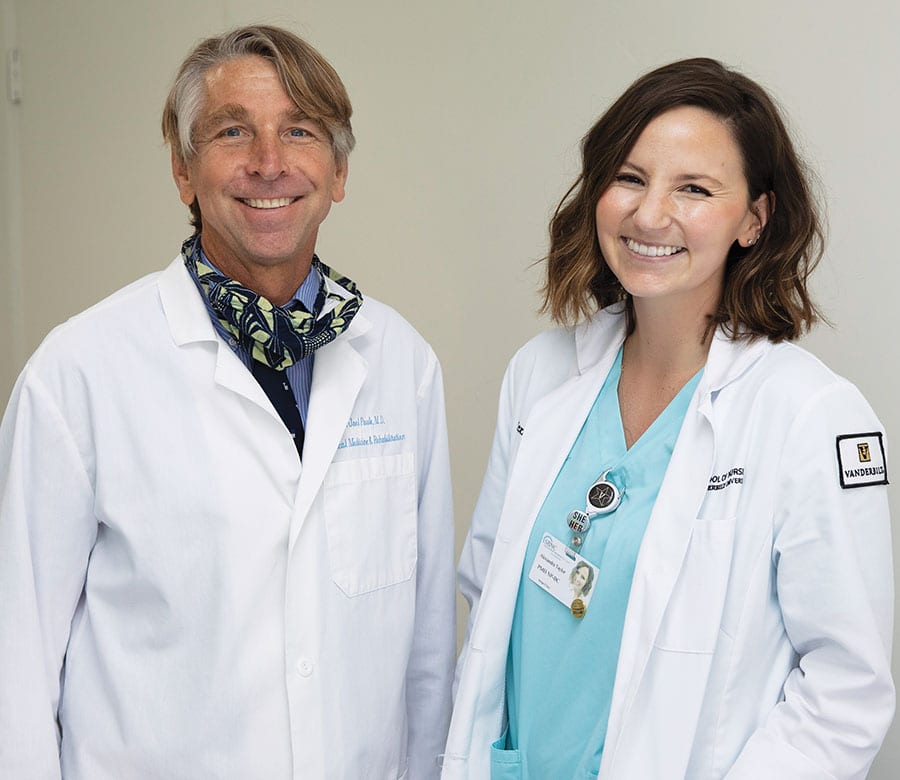
Project Recovery Adult Outpatient Treatment Center
Project Recovery is a program of the Council on Alcoholism and Drug Abuse. Project Recovery provides a compassionate, structured and low-cost outpatient treatment program for adults with alcohol and substance dependence issues including dual diagnosis or co-occurring mental health disorders. The program provides therapeutic counseling for clients who are receiving Medication-Assisted Treatment for an Opioid Use Disorder. The treatment center also provides specialized programs for pregnant and parenting women and their children, as well as individual and group therapy for spanish-speaking clients.
Clients have a primary counselor who develops their treatment plan and links them with services to support their recovery including health care, mental health services, job placement, and sober living environments.
Location: 133 E. Haley St., Santa Barbara, CA 93101
For an appointment call: (805) 564-6057.
website
“My addiction had such a grip on me there seemed to be no way out. With the help of Project Recovery, I now have over four year’s sobriety. My wife and I own our own painting company. I owe a great deal of my happiness to everyone at Project Recovery who showed me there was a better way!”
— Jon, Project Recovery Graduate
Daniel Bryant Youth and Family Treatment Center
The Daniel Bryant Center is a program of the Council on Alcoholism and Drug Abuse. It provides safe, effective outpatient treatment for youth, ages 10-19 who are struggling with substance abuse. Each client receives an in-depth assessment of their treatment needs. Together, the therapist and client develop an individualized treatment plan. All clients are screened for both mental health and substance abuse issues and mental health treatment is provided in combination with treatment for a substance use disorder, as needed. Treatment plans include a variety of research-based counseling and education groups designed to help teens learn skills to support their recovery.
The Center provides therapeutic counseling for clients undergoing Medication-Assisted Treatment in collaborating with their treating physician. Parents and caregivers are involved in treatment whenever possible. The Center’s newest program, Multi-Dimensional Family Therapy, engages the entire family in supporting their child’s recovery and is one of the highest-rated, family-focused treatment programs in the country. Services include:
- Comprehensive assessment
- Individual Counseling
- Group Counseling
- Family Counseling
- Drug Testing
Location: 1111 Garden Street, Santa Barbara, CA 93101
For an appointment call: (805) 730-7575.
website

I’ve been clean for a year and three months now. My mother is my best friend and I’ve never been happier. I have a job and like going to school. I feel like I‘m finally living. My family and I are eternally grateful to the program at the Daniel Bryant Center for giving me my life back. It’s a gift I never thought I’d receive. It’s a gift I don’t know how to repay.
— E. L., program graduate
Pinnacle Treatments Centers (previously Aegis)
Pinnacle Treatment Center provides evidence based treatment services for individuals seeking treatment for opiate addiction, including Medication-Assisted Treatment using Methadone, Buprenorphine (Suboxone), and Naltrexone (Vivitrol). The clinic provides confidential, person centered services in a safe and judgement free environment. Through evidence based individual and group counseling, program participants discover healthier ways to live and to be participants in the community. Other services include:
- Expressive therapy
- Complementary therapies including yoga, acupuncture, hypnotherapy, and mindfulness/meditation
- Trauma support
Location: 4129 State Street, Santa Barbara, CA 93110
For an appointment call: (805) 964-4795.
website
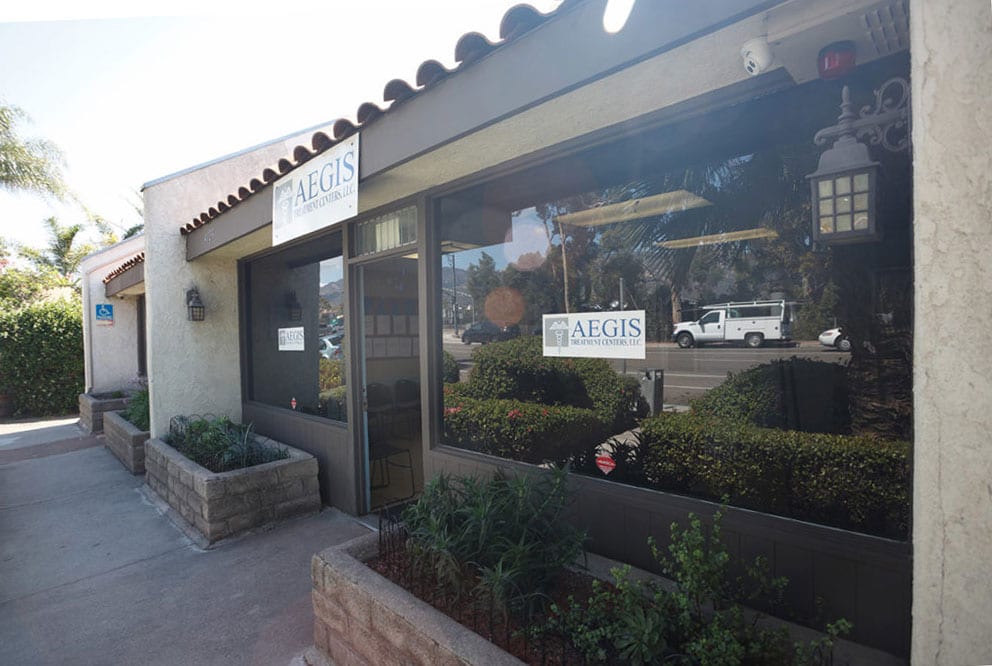
Santa Barbara County Department of Behavioral Wellness
Adult Behavioral Health Clinic
This clinic serves adults who are Medi-Cal beneficiaries with severe mental illness and/or substance use disorders, as well as individuals experiencing mental health crises.
Location: 4444 Calle Real, Goleta, CA 93110
For an appointment call: (805) 964-4795.
website
The Santa Barbara County Alcohol & Drug Program also contracts with local community-based organizations to provide alcohol and drug prevention, treatment, and recovery services to the community. If you think you or someone you know might have an alcohol or drug problem, you may contact the 24-hour toll-free Access Line (888) 868-1649 for assistance in locating a service provider in your area.
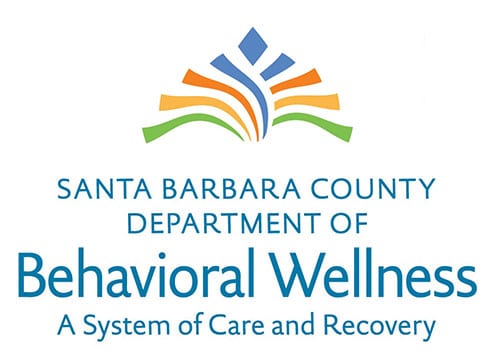
Residential Treatment Services
Project Recovery Adult Residential Treatment Center
The Project Recovery Residential Treatment Center is a 12-bed facility for men and women in a home-like environment in downtown Santa Barbara, operated by the Council on Alcoholism and Drug Abuse. The program offers supervised withdrawal from drugs and alcohol for patients that do not need to be in a hospital environment. The program also accepts clients who are undergoing Medication-Assisted Treatment for Opioid Use Disorder. Clients who qualify for Medi-Cal may also stay for up to 90 days in the residential treatment program. Clients attend treatment groups daily and are introduced to recovery support groups in the community.
Staff assess clients needs during their stay and design a plan for ongoing treatment in the community following their stay in residential treatment that may include outpatient treatment, and linkages to sober living facilities and recovery support groups.
For an appointment call: (805) 963-1836.
website
“I came into Project Recovery broken, with nowhere to go. The residential detox program gave me an introduction to the 12 steps and educated me on early recovery tools. The staff treated me with respect and dignity, something I had not felt in a long time. Because of my experience I was motivated to pursue a certificate in counseling at Santa Barbara City College.”
— Program Graduate
Santa Barbara Cottage Hospital Residential Center
With 24 resident beds, the Cottage Hospital Residential Center offers a reasonable cost alternative to a hospital setting. The program provides medically supervised care and is open to men and women 18 years and older.
The Center combines a highly structured therapeutic environment with individual, group and family treatment. The program incorporates a full complement of activities that include a recovery-based curriculum, relapse prevention, stress management, coping skills development and continuing recovery planning. The program may include:
- Medical detox
- Acute inpatient psychiatry
- Residential treatment
Location: 316 W. Montecito Street, Santa Barbara, CA 93101
For an appointment call: (805) 569-7422
website
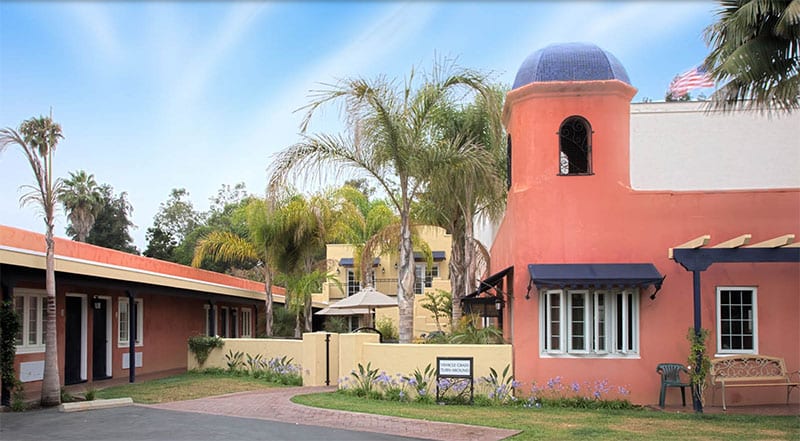
— ONLINE RESOURCES —
Recovery Support Groups
Alcoholics Anonymous
24 Hr Phone: (805)962-3332
santabarbaraaa.com
Narcotics Anonymous
State and National On-Line Resources
Choose Change California
California Medication Assisted Treatment Expansion Project
Substance Abuse and Mental Health Services Administration
— A STORY OF HOPE —
Compassionate Care:
Recovery with Medicine-Assisted Treatment
Hal is no stranger to recovery. A handsome, bright man, Hal is a Santa Barbara native. He recalls his early childhood as ideal, raised by parents who wished only the best for him. But somehow he never felt that he “belonged.” A self-proclaimed “nerd,” he suffered from acute social anxiety.
As a teen, he discovered what he refers to as “whiplash liquor”—little bits alcohol from each bottle in his parent’s liquor cabinet. The alcohol took away his anxiety and made him feel “a part of the world” for the first time.
Alcohol and cocaine became part of his lifestyle, but by age 26 he felt hopeless and was seeking a solution for “a life unlived.” He found the 12-Steps Program and for 10 years was able to sustain his sobriety with the help of the recovery community. Then he suffered a relapse, and this time it almost killed him.
By age 52, Hal was going through a life-threatening withdrawal from a lethal mix of alcohol, adivan, heroin, fentanyl and methamphetamine. He sought help at the Cottage Hospital Emergency Room, where doctors referred him to the Bridge Clinic.
The minute he met Dr. Paule, the clinic’s addiction specialist, Hal knew he had found someone who had empathy for his patients. “Addicts are intuitive,” said Hal. “We know when someone doesn’t care or is burned out from their job. Dr. Paule was different. He was patient, and I remember the first thing he said to me: ‘Hal, you’re one of those guys who is going to stay sober or going to die while trying.’”
Hal has been seeing Dr. Paule and the staff at the Bridge Clinic for almost a year, where he is receiving Medically Assisted Treatment. He chose to share his story to help educate the public and reduce the stigma associated with having a substance use disorder.
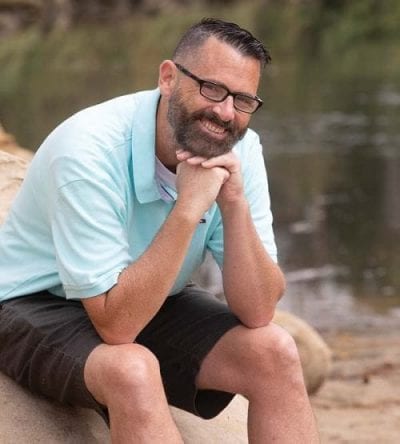
“Dr. Paule symbolizes hope to me…for all of us. We have to deal with so much stigma and suffering. To have a man willing to treat us with compassion, coupled with genius skills, gives me hope and hope for others who are suffering. I have received the finest treatment by a one-in-a-million doctor for free…and this is the best way I can give back.”
— Hal, Bridge Clinic Patient
